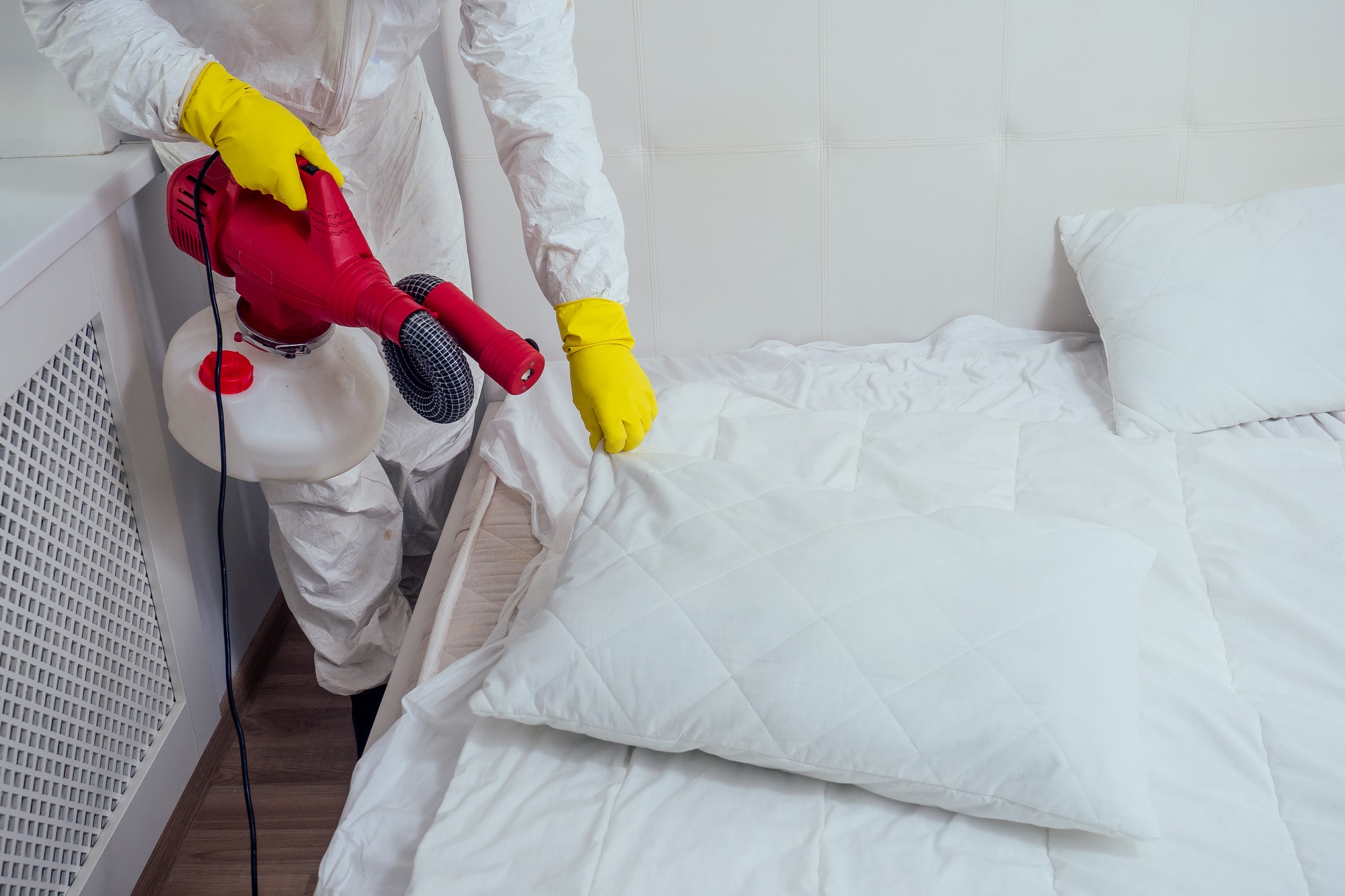Relied On DC Exterminator for Bed Bug Heat Treatment Near Me
Relied On DC Exterminator for Bed Bug Heat Treatment Near Me
Blog Article
Exploring the Science Behind Bed Insect Heat Treatments as a Sustainable Pest Monitoring Method
In the realm of bug management, the quest for reliable and sustainable solutions stays a constant search. One such approach that has obtained grip in recent times is using warmth therapies to battle bed insect invasions. By using the science behind thermal fatality factors for these relentless pests, warmth therapies use an appealing alternative to standard chemical-based methods. The complexities of just how heat effectively eliminates bed pests and the broader ramifications for lasting bug administration techniques make this a subject worth checking out better.
Bed Bug Warmth Treatment Process

Thermal Fatality Factor for Bed Insects
Subjecting bed insects to raised temperatures past their thermal resistance range is critical for achieving effective eradication in warmth therapy processes. The thermal death factor for bed insects refers to the temperature at which these bugs can not endure. Study indicates that bed insects start to perish when revealed to temperatures above 113 ° F(45 ° C) for a continual duration. As the temperature level increases, so does the death price of bed bugs. At around 118 ° F(48 ° C ), bed pests begin to pass away quickly, with a death rate of almost 99% within minutes of exposure. This demonstrates the sensitivity of bed pests to heats and highlights the efficiency of heat therapies in removing infestations. By reaching and preserving temperatures above the thermal fatality point for bed insects, parasite administration specialists can ensure thorough removal of bed insect populaces, consisting of hard-to-reach locations where chemical treatments may be less reliable. Understanding the thermal fatality factor for bed bugs is vital for applying effective warmth treatment approaches and achieving sustainable insect management outcomes.
Benefits of Warmth Treatments
Having developed the critical thermal fatality factor for bed insects, it is critical to currently discover the substantial benefits that warm therapies use in successfully eradicating these resistant pests. When contrasted to traditional chemical approaches, heat treatments existing a number of essential advantages. Among the primary advantages is that warmth can pass through deep right into gaps and cracks where bed insects conceal, guaranteeing that also one of the most hard-to-reach areas are warmed to lethal temperature levels. This thorough approach not just eliminates real-time pests yet likewise targets bed pest eggs, preventing future infestations.
In addition, warmth therapies are safe and eco pleasant, making them a lasting bug management approach. Unlike chemical pesticides, warmth treatments do not leave damaging deposits that can present threats to human health or the setting. This element is especially important in delicate environments such as hospitals, institutions, and residential areas where chemical use might not be preferable.
Additionally, heat visit site therapies have a high success price in removing bed bug invasions in a solitary therapy, reducing the need for numerous check outs and decreasing disturbance to residents. This effectiveness not just conserves time and cash however additionally offers assurance to those managing bed insect issues.
Performance of Warmth Therapy

Study researches have consistently shown the effectiveness of warmth treatments in attaining a high price of bed insect death. Properly conducted heat therapies can reach all the fractures and gaps where bed pests might be harboring, making certain a thorough technique to extermination. Warmth treatments have actually the included benefit of eliminating bed insect eggs, which are frequently immune to traditional chemical treatments. On the whole, the effectiveness of warm therapies in getting rid of bed insect infestations makes them a lasting and dependable bug management technique.
Sustainable Pest Monitoring Benefits
Executing lasting pest administration techniques uses lasting benefits for both the atmosphere and public wellness. By making use of approaches such as heat therapies for parasite control, we can decrease the reliance on dangerous chemical pesticides that can have adverse impacts on ecosystems and human health and wellness - exterminator. Sustainable bug monitoring strategies help in maintaining biodiversity by targeting details insects without damaging non-target microorganisms, thus maintaining a well balanced ecosystem
Furthermore, lasting pest management practices add to the general health and health of the public. By reducing direct exposure to hazardous chemicals utilized in standard insect control methods, warmth treatments supply a more secure option for bug monitoring in property, business, and public spaces. This decrease in chemical use likewise assists in avoiding pesticide residues from contaminating air, water, and soil, guarding ecological quality.
Verdict
To conclude, bed pest warmth treatments have been revealed to be a effective and sustainable bug monitoring technique. The thermal fatality factor for bed insects makes them susceptible to warm therapies, which have numerous benefits over conventional chemical therapies. The effectiveness of warmth treatments in getting rid of bed bug invasions while minimizing environmental effect highlights the potential official site of this approach as a lasting solution for bug control.
The bed websites pest warmth treatment procedure involves raising the temperature within infested locations to a degree that successfully gets rid of bed bugs and their eggs. By reaching and keeping temperature levels above the thermal death factor for bed insects, bug management specialists can guarantee thorough elimination of bed pest populations, including hard-to-reach areas where chemical therapies might be less effective. One of the main advantages is that warmth can pass through deep into gaps and splits where bed insects hide, making certain that even the most hard-to-reach areas are heated to lethal temperature levels. Unlike chemical treatments that might leave behind resistant populaces, heat therapies offer a safe and environmentally friendly service that can penetrate deep into furnishings, wall surfaces, and various other hard-to-reach locations where bed insects conceal.
The thermal death point for bed bugs makes them vulnerable to warmth therapies, which have numerous benefits over traditional chemical treatments.
Report this page